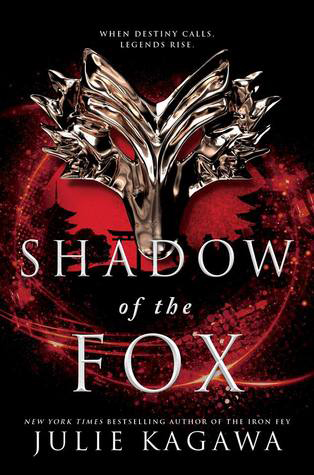
Bookworms seeking refuge in new fantasy and mythology-based reads, take heart: Author Julie Kagawa has recently published a new book titled “Shadow of the Fox,” and it takes its readers on an unexpected ride.
Kagawa is the author of the “Talon” saga and the “Blood of Eden” series, but she’s most known as the bestselling author of “The Iron Fey,” a series that comprises seven books. For many fantasy readers, this is a nostalgic throwback.
Combined with its strong but relatable protagonist, the subtle surprises and shifts in perspective add to the layers of the story. “Shadow of the Fox” follows a teenage female lead, Yumeko, who narrates in first person. However, the perspective alternates between other characters throughout the text, resembling the premise of “The Iron Fey” saga and its main character, who was also a teenage girl finding herself in strange situations. Kagawa specializes in developing worlds by taking pre-existing ideas, creatures and characters and molding them to develop a new story. “The Iron Fey” is noted for being centered around characters and settings from Shakespeare’s “A Midsummer Night’s Dream.”
Divided into three parts, “Shadow of the Fox” follows Yumeko on a dangerous journey. Half-human and half-kitsune, the Japanese word for fox, she has been raised by monks all her life, only to be thrown into chaos when life as she knew it is destroyed by mysteriously summoned demons. Yumeko is sworn to protect an ancient relic with her life, but the voyage to safety is especially difficult for a creature as inexperienced as she is. Along the way, she meets samurais and ronin, those who have fallen and owe loyalty to no one, and with them, uneasy new alliances are formed. But while safety seems like a promise fulfilled, unexpected dangers and a plethora of enemies meet them at every turn.
Aside from the first person narration, there are also chapters written in third person that serve as effective backstory to further capture the reader’s interest. Moreover, the book has an immediate hook — it’s distinct because of its interaction with a branch of mythology many Americans are unfamiliar with. The injection of Japanese mythology holds the reader to a higher level of expectation, but once you’re interested, the payoff is well worth it.
If you’re looking for a quick read that doesn’t have you face unknown creatures, this might not be your book — be prepared for curiosity to hit hard when you’re confronted by unfamiliar terminology and Japanese-based demons, such as the jorogumo, a half-spider, or the half-woman yokai, a supernatural creature. While interesting, the references to Japanese lore may do one of two things to the reader: prod you to look them up because the glossary provided in the final pages wasn’t enough to sate you, or make you miss important details when skimming passages. The downside is this: Missing one important concept or term can easily affect your enjoyment of the rest of the chapter. While it deserves a read, you might want to be prepared for all the mythology headed your way.
Kagawa introduces her main characters in a unique situation, despite their matches to the typical damsel-in-distress and the supposed-savior archetypes. The inevitable attraction and cliché star-crossed romance that develops throughout is a tale as old as time; nevertheless, romantics will find themselves smiling as the characters become entangled in their emotions. Besides romance, readers who favor thrilling battle scenes and courtly settings would also appreciate this read.
Kagawa captures the voice of how a teenager might think and has a knack for introducing characters with description and voice. While the reader might first absorb them as people in a fictional world because they come off strong, the characters soon grow into relatable personalities that compel the reader to feel compassion for them.


